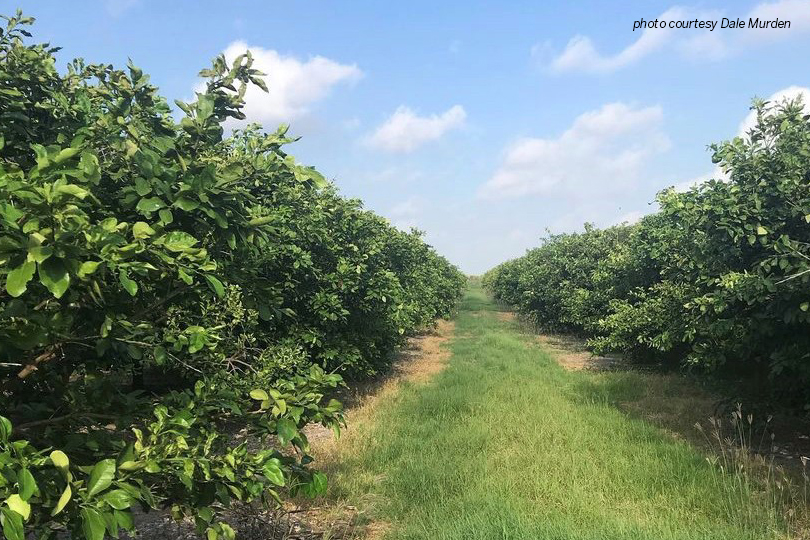By Julie Tomascik
Editor
After February’s historic freeze, Rio Grande Valley citrus growers faced much work and rehab for the groves.
“We had to see what groves we were going to keep and what groves we were going to take out and where we were going to replant,” Dale Murden, citrus grower and president of Texas Citrus Mutual, said. “A lot of the trees are looking good after the freeze, but we’re soaking a lot of money in them, which means we’re going to have more expenses, obviously.”
More expenses with a citrus crop that’s forecast to be down 70% is tough news for Valley farmers.
“A light crop means little income when you’re trying to rehab a grove and infuse the dollars into it to get them back to a profitable state,” Murden said.
But it could have been worse. Like the freezing weather in 1983 and 1989 that decimated the citrus crops.
“It’s a big number—70%. But we’re thankful we’ve got what we’ve got. At least we get to keep our place in the marketplace somewhat until we’re back fully,” he said.
February’s freeze devastated two different growing seasons of crops, Murden noted.
The majority of the fruit that remained on the trees in February fell to the ground, and the crop that’s growing now was significantly reduced. Because of that, harvest is expected to be delayed.
“I think we’re probably going to push harvest back to the first of November. Typically, we’d start in late September, but with a light crop, we’ll probably consolidate harvest into about a maybe a three month period—November, December and January,” he said. “We’ll just have to see how it goes. But I think that’s most of the sheds’ plans at the moment is to just hold what we’ve got and then pull the trigger early November. Kind of in time for the holidays.”
The holiday seasons are important for Texas citrus growers. Providing a little slice of sunshine in holiday gift baskets is a premium market for the fruit.
In addition to weather challenges, Rio Grande Valley citrus growers also struggle with the Mexican fruit fly, citrus greening and lack of labor needed to help harvest the fruit from the trees.
“Aside from COVID, we were seeing labor issues starting to develop here, anyway. That’s a huge concern of ours and not sure what to do about that. Obviously, guestworker programs are what we need, but then we need to just get past this COVID pandemic that we’re in and move forward,” he said. “It’s really, really hard to find people to work right now. And then in the specialty crop industry down here, we typically fight each other for laborers. We’ll be harvesting grapefruit at the same time some of these specialty crops are coming in. So, now we’re competing with ourselves for a smaller labor pool.”
Despite the challenges this season has brought, growers remain hopeful.
“I was out digging around in one of the groves the other day, and when you see those clusters of fruit coming back and looking good, that just always gives you optimism,” Murden said. “And why do we do what we do? Well, we’re passionate about it, it’s what we love doing. It’s a challenge. You can’t control Mother Nature, but your heart and soul is in it. It’s just what we do.”
Watch this video to see the devastating impact of Winter Storm Uri.

